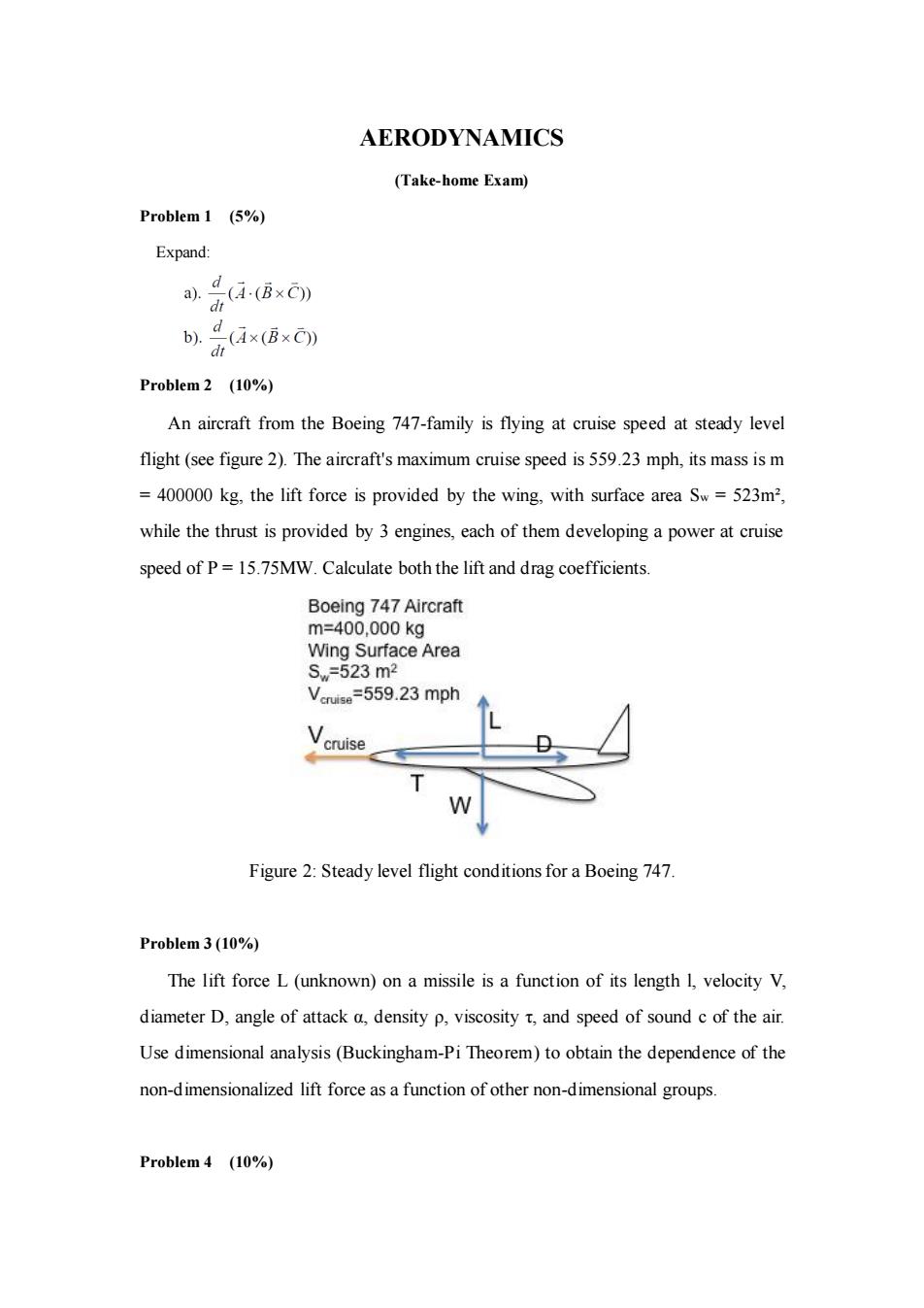正在加载图片...

AERODYNAMICS (Take-home Exam) Problem 1 (5%) Expand: ad@o 品ixO Problem 2 (10%) An aircraft from the Boeing 747-family is flying at cruise speed at steady level flight(see figure2).The aircraft's maximum cruise speed is55923 mph,its mass ism =400000 kg.the lift force is provided by the wing,with surface area Sw=523m2, while the thrust is provided by 3 engines,each of them developing a power at cruise speed of P=15.75MW.Calculate both the lift and drag coefficients. Boeing 747 Aircraft m=400,000kg Wing Surface Area Sw=523m2 Venuse=559.23 mph Vcruise W Figure 2:Steady level flight conditions for a Boeing 747. Problem 3(10%) The lift force L (unknown)on a missile is a function of its length L,velocity V, diameter D,angle of attack a density p,viscosityand speed of sound c of the air. Use dimensional analysis(Buckingham-Pi Theorem)to obtain the dependence of the non-dimensionalized lift force as a function of other non-dimensional groups. Problem 4 (10%)AERODYNAMICS (Take-home Exam) Problem 1 (5%) Expand: Problem 2 (10%) An aircraft from the Boeing 747-family is flying at cruise speed at steady level flight (see figure 2). The aircraft's maximum cruise speed is 559.23 mph, its mass is m = 400000 kg, the lift force is provided by the wing, with surface area Sw = 523m², while the thrust is provided by 3 engines, each of them developing a power at cruise speed of P = 15.75MW. Calculate both the lift and drag coefficients. Figure 2: Steady level flight conditions for a Boeing 747. Problem 3 (10%) The lift force L (unknown) on a missile is a function of its length l, velocity V, diameter D, angle of attack α, density ρ, viscosity τ, and speed of sound c of the air. Use dimensional analysis (Buckingham-Pi Theorem) to obtain the dependence of the non-dimensionalized lift force as a function of other non-dimensional groups. Problem 4 (10%)